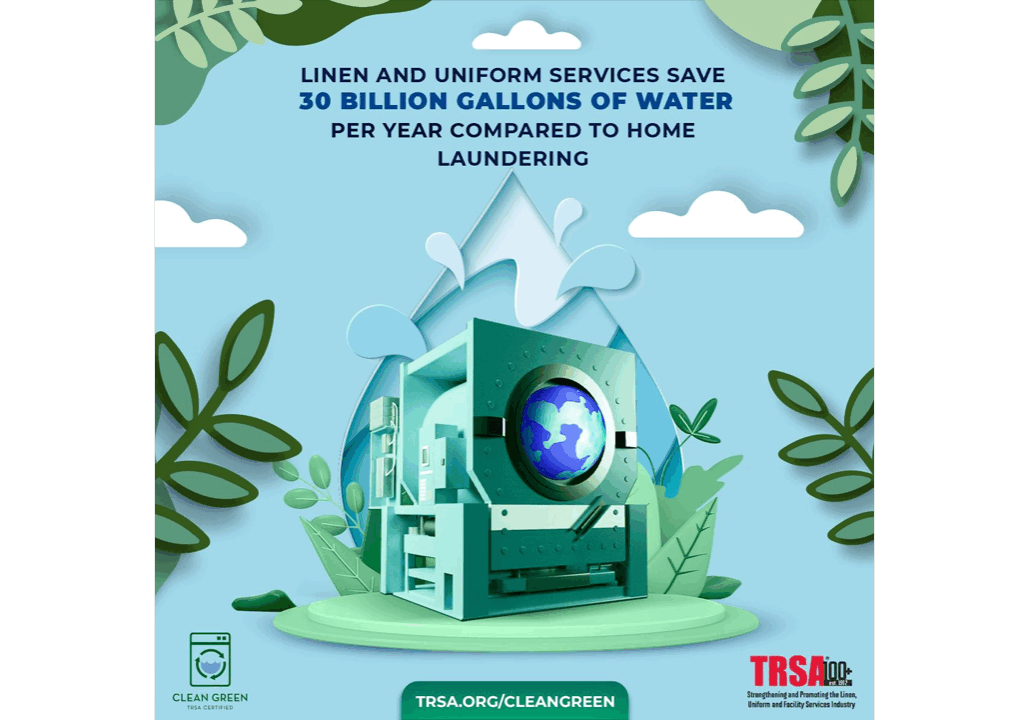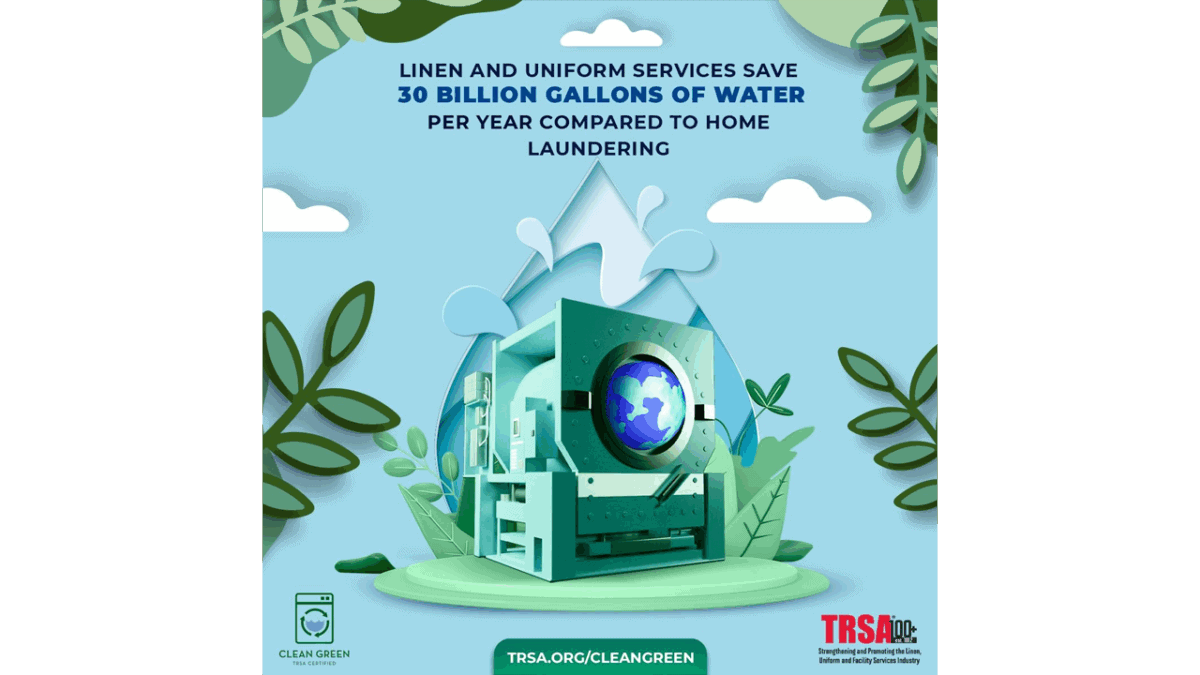From system upgrades to equipment redesigns, companies in the linen, uniform and facility services industry are finding new ways to reduce water and energy use – without sacrificing performance. A forthcoming article in May’s Textile Services explores how these innovations are driving greater efficiency, lowering costs and promoting sustainability across the industry.
For starters, we review the experience of Phil Vershaw of Mickey’s Linen. Vershaw is the chief engineer for the Chicago-based regional company’s plant in Villa Park, IL, about 20 miles west of the Windy City. When Vershaw started with the company in 2018, he was amazed that the washer/extractors were getting 0.6 gallons per lb., an unusually low number. “With tunnel plants, it’s a little easier because of the built-in water reclamation that they have,” Vershaw said. “But when you’re dealing with washer/extractors, depending on your mix, I mean you can be anywhere from a gallon and a half per pound to over 3 1/2 gallons per pound. And when you’re doing F&B (food-and-beverage) textiles and things of that nature, a lot of times you’re closer to that 3 1/2 gallons per pound.”
Vershaw credits a finely tuned ceramic-filtration system from Norchem Corp. for the outstanding efficiency of the plant’s wash aisle, which includes four 900 lb. (408 kg.) Ellis Corp. washer/extractors; two 450 lb. (204 kg.) G.A. Braun Inc. washer/extractors, and two 140 lb. (63 kg.) pony washers from Pellerin Milnor Corp. The plant’s ceramic-filtration system includes one canister that captures wash water, which comes in at 110°-115°F and has high alkalinity. The plant uses a Ludell heat exchanger to reclaim this heat. That practice eliminates the need to preheat incoming water from the city, he says. Regular testing and monitoring of the system helps ensure maximum savings on the water the plant uses to process lightly soiled F&B items, Vershaw says.
Another company cited in the article, dubbed “Innovation Drives Efficiencies—Saving Water and Energy,” is Wildman Business Group (WBG), Warsaw, IN. Here we learn about a company initiative that has delivered significant savings in natural gas use. The project centered on upgrading the company’s wastewater-heat recovery system. Corporate Engineer Jeremy Jabaay describes how the addition of a customized heat exchanger spurred efficiency gains. “At our Warsaw plant, we recently upgraded our wastewater-heat recovery system from a plate frame heat exchanger to an oversized tube and shell,” Jabaay said. “This has allowed us to double our average Btu recovery. This is not a new technology, but we did apply it in a slightly nonstandard way with over-sizing it.”
Jabaay’s team purchased the equipment second-hand and reconditioned it in-house, he added. “As for the equipment, that was an internal project,” he says. “We sourced the heat exchanger on the used market. We had it completely refurbished and then integrated it ourselves.”
A third example of conservation comes from Prudential Overall Supply, which is simultaneously promoting sustainability along with utility savings. “We continue to install solar (panels) where appropriate,” said Chris Welch, president of the Irvine, CA-based national industrial operator. “As well, we are retrofitting all of our facilities with LED lighting and updating the floors to reflect more light. Maintaining and properly operating heat reclaimers is an ongoing area of focus in our business.”
The initiatives highlighted above show how technological advances and system modifications are producing substantial savings in water and energy use, while also benefiting the environment. Look to May’s issue for details on these and other initiatives from leading commercial laundries. Click here for a sneak preview of the full article.
Sign Up For Our Newsletter
Receive the latest updates on the linen, uniform and facility services industry from TRSA delivered straight to your inbox.








